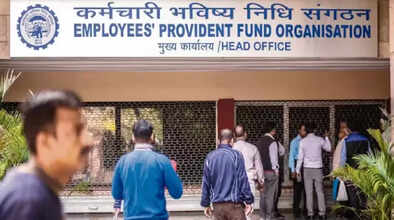EPFO Chief Defends New Withdrawal Rules, Says Changes Will Benefit Subscribers

The **Employees’ Provident Fund Organisation (EPFO)** has clarified its stance on the recently announced changes to the withdrawal policy, stating that the new rules are designed to protect the long-term financial interests of subscribers. EPFO’s **Central Provident Fund Commissioner and CEO, Ramesh Krishnamurthy**, defended the move, emphasizing that the aim is to make access to provident fund (PF) savings easier while ensuring subscribers do not exhaust their retirement corpus prematurely.
New Rules to Ensure Financial Discipline and Long-Term Security
The new withdrawal policy—approved by the **Central Board of Trustees (CBT)** on **October 13, 2025**—allows subscribers to withdraw up to **75% of their EPF balance** for essential needs, housing requirements, or in specific circumstances such as medical emergencies or higher education. The remaining **25% must be retained** in the account as a **retirement buffer**, which will continue to earn **an annual interest of 8.25%**.
Krishnamurthy explained in an interview with **CNBC-TV18** that the objective behind the reform is twofold:
> “The changes are meant to give members access to their funds during genuine needs, while also encouraging them to preserve a portion of their savings for the future. This will help strengthen the country’s social security framework,” he said.
He added that many subscribers withdraw their entire PF savings soon after leaving a job, leaving them with little to fall back on during retirement. The new policy, therefore, aims to cultivate **financial discipline and savings continuity** among employees.
12-Month Rule for Full Withdrawal
One of the most debated changes in the new EPFO rules concerns the **timeline for full withdrawal**. Earlier, employees could withdraw their entire EPF balance just **two months after leaving a job**. Under the revised rule, subscribers can now do so only **after 12 months** of unemployment.
Explaining the rationale, Krishnamurthy said,
> “If a subscriber waits for 12 months, the account earns at least one round of interest. This benefits the member and encourages savings stability.”
He further noted that the 12-month condition also aligns with pension eligibility criteria, ensuring subscribers remain connected to the social security system for a longer duration.
Frequent Withdrawals Undermine Social Security
According to EPFO data, nearly **50% of members have less than ₹20,000** in their accounts at the time of final settlement, and around **75% of pension contributions are withdrawn within three years**. Krishnamurthy highlighted that frequent withdrawals weaken the purpose of the provident fund scheme, which is intended to serve as a **long-term savings tool for retirement**.
> “Repeated withdrawals compromise future security. The new guidelines strike a balance between providing financial flexibility and maintaining adequate retirement reserves,” he stated.
Concerns Among Employees and Experts
Despite EPFO’s justification, several industry experts and employees have expressed concerns, especially regarding sudden job losses or layoffs. Professionals from sectors like IT and manufacturing argue that the 12-month waiting period could create difficulties for those who lose their jobs unexpectedly.
However, EPFO maintains that the new policy is not rigid. Subscribers can still **partially withdraw funds** before the 12-month period in case of specific situations such as **medical treatment, education, marriage, or home purchase**. This ensures that individuals facing urgent financial needs are not left stranded.
Addressing Misconceptions
Responding to criticism, Krishnamurthy clarified that the 12-month rule is not intended to restrict access to funds but to encourage employees to maintain their EPF accounts.
> “If a person remains unemployed for a year, they can withdraw the remaining 25% balance as well. The goal is not to penalize anyone but to ensure that people benefit from accumulated interest and build a stronger corpus,” he explained.
Expert View: Balancing Flexibility with Protection
**Suchita Dutta**, Executive Director of the **Indian Staffing Federation**, said that while the rule promotes financial discipline, it may cause short-term inconvenience for laid-off employees. “This move could be beneficial from a long-term perspective, but it’s important that EPFO also provides flexibility during economic downturns,” she noted.
Conclusion
The new EPFO withdrawal rules represent a significant shift in India’s social security structure—focusing on **sustainability over short-term relief**. By mandating a 25% retention of funds and extending the full withdrawal window to 12 months, the EPFO aims to help employees **build stronger retirement savings** while still providing access to funds in times of genuine need.
For subscribers, this policy may initially seem restrictive, but in the long run, it promises to **strengthen financial stability and ensure a secure post-retirement future**.

